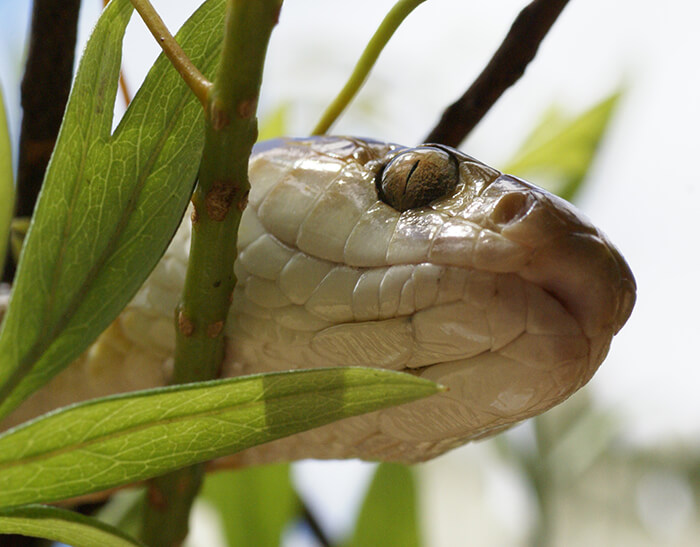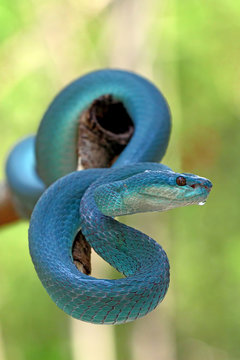Introduction
The tiger serpent is just one of Australia's the majority of infamous reptiles, feared for its powerful venom and aggressive personality. This interesting animal plays a crucial function in the environment, yet it often encounters misunderstandings that cause unneeded anxiety. In this thorough article, we will explore the globe of the tiger serpent, exploring its habitat, poison qualities, and important first aid practices in instance of a snake bite.
Understanding the Tiger Snake: Habitat, Venom, and Emergency Treatment Essentials
Tiger serpents are predominantly found along the southern coastline of Australia, consisting of Tasmania. They grow in numerous atmospheres such as marshes, seaside areas, and even urban areas. Their flexibility makes them successful killers; nonetheless, their closeness to human environments commonly leads to encounters that can cause bites.
This article aims to debunk tiger serpents by reviewing their habitat choices, analyzing their venom structure and impacts on humans, and offering essential emergency treatment details for bites.
1. Tiger Snake Habitat: Where Do They Live?
1.1 Review of Tiger Snake Distribution
Tiger serpents (Notechis scutatus) are mostly discovered in southern Australia and Tasmania. They occupy numerous communities ranging from coastal marshes to freshwater lakes.
- Coastal Areas: Tiger serpents are typically seen near shorelines where they hunt for fish and amphibians. Wetlands: These areas supply sufficient hiding places and abundant prey. Urban Areas: As cities increase into all-natural habitats, tiger serpents might be seen venturing into suv yards or parks.
1.2 Preferred Environments of Tiger Snakes
Tiger snakes choose wet environments where water sources are easily available. Their habitats commonly include:
- Marshes: The dense plants enables them to ambush victim effectively. Swamps: These areas offer shelter from killers while supplying an abundant searching ground. Riversides: Water bodies bring in several animals which act as food resources for these snakes.
1.3 Environmental Elements Influencing Environment Choice
Several aspects affect where tiger snakes select to live:
- Temperature: Being ectothermic (cold-blooded), they call for cozy settings for optimum activity levels. Prey Availability: High populaces of frogs and tiny creatures bring in these snakes. Shelter: Dense greenery serves not only as camouflage yet likewise as protection against potential threats.
2. Are Tiger Snakes Venomous? Recognizing Their Venom
2.1 Composition of Tiger Snake Venom
Yes! Tiger serpents are undoubtedly poisonous creatures. Their venom is a complex mix including neurotoxins that can create paralysis and coagulopathies influencing blood clotting mechanisms.
Key Elements of Venom:
- Neurotoxins: Influence nerve feature resulting in paralysis. Hemotoxins: Damage blood vessels triggering internal bleeding.
Understanding these components helps us appreciate the effectiveness of a tiger snake bite.
2.2 Results of a Tiger Snake Attack on Humans
A bite from a tiger serpent can lead to severe symptoms:
- Local Symptoms: Pain, swelling, and staining at the bite site. Systemic Signs and symptoms: Nausea or vomiting, throwing up, difficulty breathing because of paralysis or restriction of airways.
Severity Levels
Minor Bite: Localized pain without systemic symptoms. Moderate Bite: Systemic symptoms but manageable with clinical care. Severe Bite: Serious; needs prompt medical intervention.3. Determining Various Sorts Of Tiger Snakes
3.1 Eastern vs Tasmanian Tiger Snakes
There are 2 key categories based upon geographic distribution:
Eastern Tiger Snake (Notechis scutatus)
Found along eastern coasts approximately Queensland.
Tasmanian Tiger Serpent (Notechis scutatus)
Adapted specifically to Tasmania's one-of-a-kind atmosphere with a little differing coloration patterns.
3.2 Color Variations in Habitat Preferences
Tiger snakes exhibit considerable shade variants relying on their environment:
- Coastal populaces frequently show stripes or blotches for much better camouflage versus sandy shores.
4. Behavior Patterns of Tiger Snakes
4.1 Aggressiveness Level
Tiger serpents are recognized for their hostile actions when endangered or cornered which can cause defensive strikes if provoked.
4.2 Hunting Techniques
They possess impressive agility enabling them to strike promptly at prey such as frogs Differences between Australian taipans and brown snakes or small rodents mainly throughout golden hours when they're most active-- making them nocturnal hunters!
5. First Aid for Snake Bites: Crucial Actions You Should Know
When it involves handling snake bites, expertise is vital!
5.1 Immediate Actions After a Bite
If bitten by a tiger snake:
Stay tranquility! Panic raises heart price which spreads out venom faster with your bloodstream.

Apply pressure around the injury making use of clean towels-- prevent reducing or drawing out venom!

Remove tight clothing/jewelry near the bite site; swelling may occur rapidly.
Immobilize the affected arm or leg making use of splints when possible-- this restricts movement helping decrease venom spread!
5.2 Getting Clinical Help
Seek emergency situation clinical support promptly! Time is crucial when taking care of prospective envenomation from tiger snakes!
5.3 Emergency treatment Set Fundamentals for Snake Bites
Having a well-equipped emergency treatment kit can make all the difference during emergency situations:
|Thing|Summary|| ------|-------------|| Pressure Plaster|Helps immobilize wound|| Clean and sterile Gauze|For clothing injuries|| Emergency Get In Touch With Details|Quick gain access to numbers|| Antivenom Details|Knowledge about neighborhood antivenoms|
6 Frequently asked questions About Tiger Snakes
Q1: Are all tiger snakes dangerous?
A: While all have venomous capabilities influencing humans substantially-- most like avoidance unless threatened!
Q2: Exactly how swiftly does tiger serpent venom affect humans?
A: Symptoms may manifest within minutes relying on area & & quantity infused throughout envenomation events!

Q3: Can you endure a tiger serpent bite without treatment?
A: Unattended attacks can be deadly as a result of fast progression; instant medical care is Camouflage in Australian snakes crucial!
Q4: What need to I do if I encounter one?
A: Maintain distance & & retreat slowly; prevent sudden motions that might provoke aggression!
Q5: Just how typical are attacks from tiger snakes?
A: Although encounters occur frequently-- real bites continue to be relatively uncommon due mostly due precautionary actions taken by residents living within influenced ranges.
Q6: Exists an antidote available?
A: Yes! Antivenoms details for Australian species exist-- clinical facilities bring these medicines ready when required quickly post-bite incidents!
7 Conclusion
Understanding the intricacies bordering "Recognizing the Tiger Serpent: Habitat, Venom, Get more info and First Aid Essentials" is critical not only for personal security however additionally cultivating conjunction with these impressive animals populating Australia's landscape! By discovering more concerning their behaviors & & reliable response approaches relating to possible experiences-- we equip ourselves much better versus unnecessary worries while appreciating nature's variety completely! So allow's welcome education rather fear-- it leads in the direction of consistency in between humankind wild animals alike!